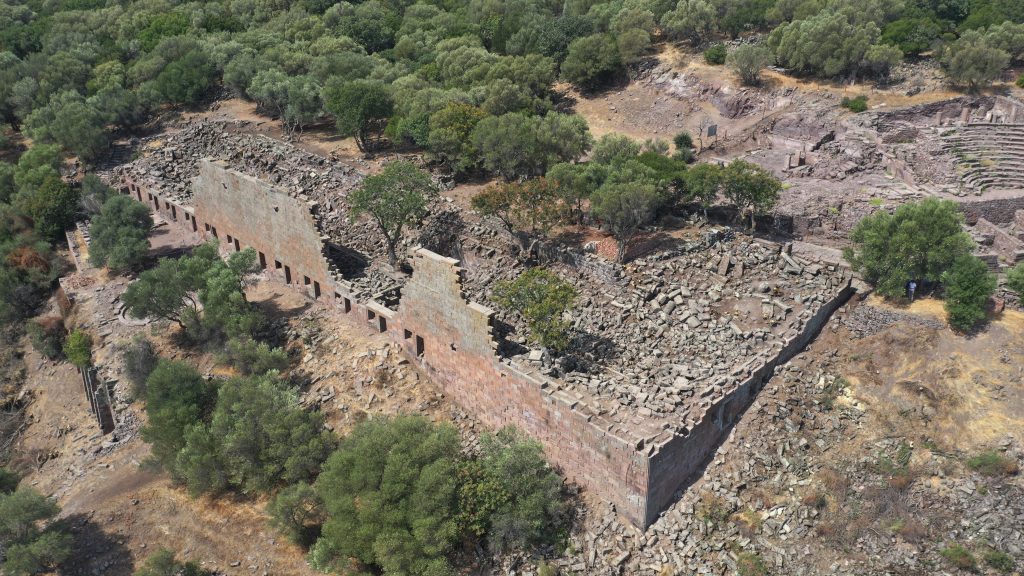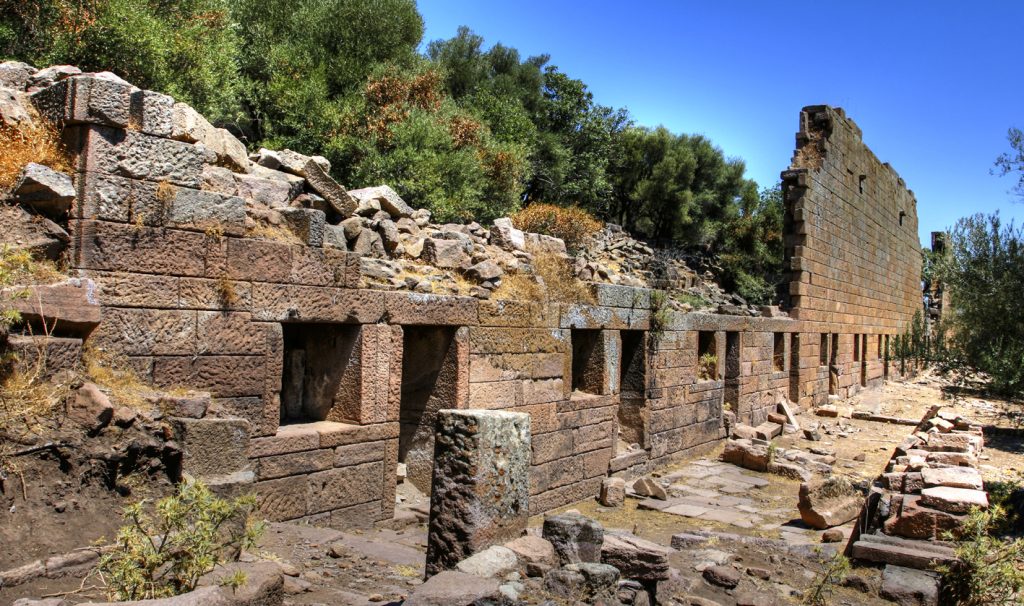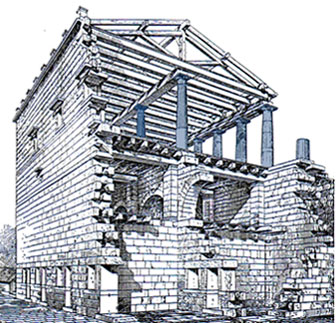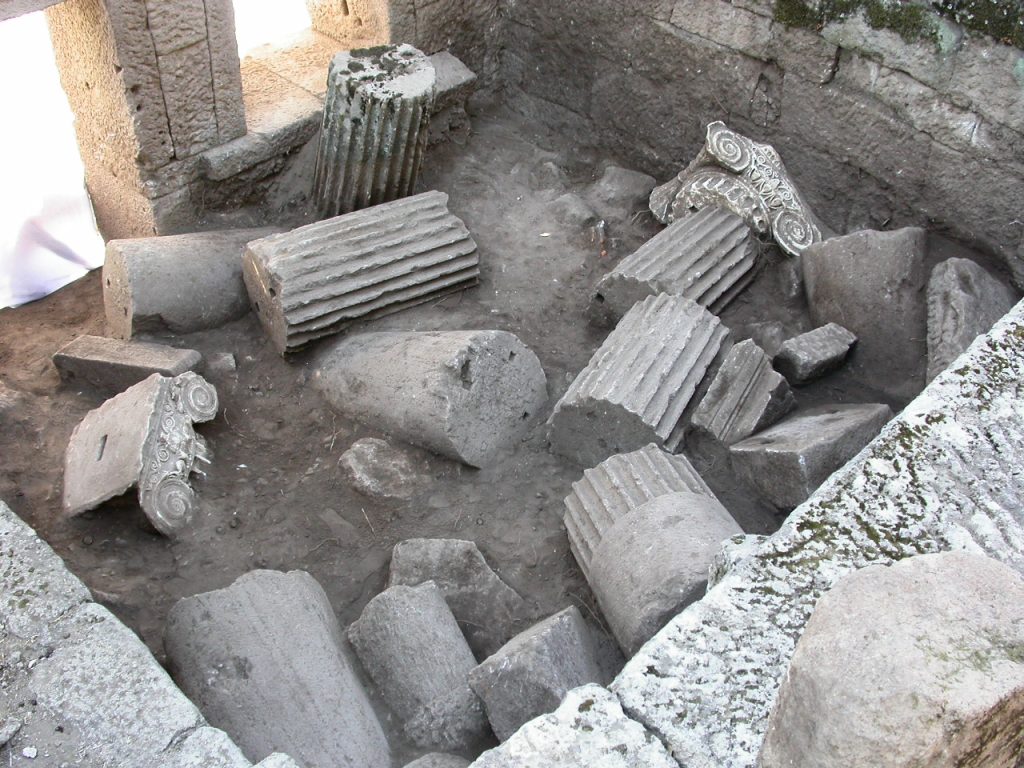
Widely defined incompletely as the “marketplace”, Agora, with a more accurate and comprehensive definition, means the place where communities meet. Agora of Aigai is located on the east of the terrace that the Upper Agora is located, the northeastern slope of the hill where the city is founded. The terrace in question is north-south oriented with its monumental structure. The Agora Building which is 80 m long and approximately 10,50 m tall on the most preserved east wall, was built with three floors. The building leans on the terrace of the Upper Agora by the wall at the west.

The first floor of the building consists of fourteen rooms, which are most likely to be shops. Twelve of these rooms are faced to the east and two are to the north. According to the architectural evidence suggests that the first floor was 4,50 m in height. Architectural fragments are extremely scarce to define the purpose of the second floor. Although there is no data available on whether this floor was divided into rooms or not, the possibility should not be ruled out. For what purpose the second floor served remains a mystery. A threshold preserved in-situ at the south façade indicates an entrance at the second floor level. The air and light requirement Agora Building and Bouleuterion Aigai 55 of this floor was provided by small windows that widen inwards with eaves.
The third floor of the building is a stoa covered with a roof supported by two rows of columns, which is accessible by a few steps from the Upper Agora and forms the eastern border of the square. The architectural pieces and column parts recovered from the debris in this area indicate that the third floor was as high as the first floor, 4,50 m. Outer columns of the colonnade were Doric, while Ionic columns constitute the second row of columns remaining inside. The columns are also made of andesite, the same material as the building itself. However, capitals of the Ionic columns are marble.

The building shows “L” shaped form, turns towards the west at the north part. The part that gives this “L” form was arranged accordingly the slope of the Agora Street at a level between the third floor and the middle floor and opens to the Agora Street. This part faces towards the Bouleuterion and has its own entrance was separated from the rest of the building as an independent place and designed in Doric order. Its arrangement, elevation, independent entrance, and façade facing towards the Bouleuterion suggest a different function for this part. Agora Building was built with isodomic ashlar masonry technique. Except for external elements such as doors, windows, and balustrade blocks, no chemical or physical binders were used. 0,85 m thick double faced walls have rubble filling between inner and outer parts. The blocks on the outer face are more elaborate than the inner face. “zipper-overlay” method was used on the corners of the building, besides the double-bond technique which was common between the middle of the Hellenistic Period to the 1st century CE. It appears to be clamps were leadreinforced bronze and / or iron. Marble had been used in special elements such as capitals.

During the limited research carried out in the Agora Building, any layers and strata would help the dating of the building could not be determined. With help of the general plan and especially the Ionic capitals, it is possible to date the building to the middle of the 2nd century BCE. As a result of the studies carried out in a limited area on the terrace, 7th and 6th century BCE layers and a wall associated with them was unearthed.
